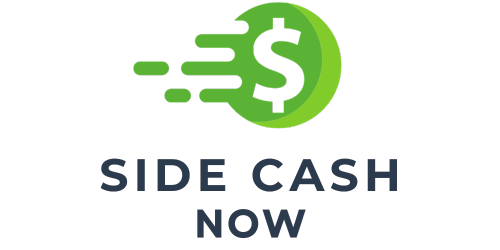If you’ve recently started a side hustle business and find yourself wondering how to effectively market and promote it, you’re not alone. In a world saturated with businesses vying for attention, finding the right strategies to get noticed can be daunting. However, fear not! This article will provide you with some valuable tips and insights on how to navigate the realm of marketing and promotion for your side hustle business, helping you reach your target audience and maximize your chances of success. So, let’s dive right in and explore the exciting world of marketing your side hustle!

Developing a Marketing Strategy
Defining your target audience
To effectively market and promote your side hustle business, it is crucial to first define your target audience. Understanding who your potential customers are will help you tailor your marketing efforts towards meeting their specific needs and preferences. Consider factors such as demographics, interests, behaviors, and challenges that your target audience may face. Conduct market research and gather insights to gain a deep understanding of your audience, enabling you to create targeted and impactful marketing campaigns.
Setting marketing goals
Once you have defined your target audience, it is essential to set clear and measurable marketing goals. These goals will guide your marketing efforts and help you track your progress over time. Whether your objective is to increase brand awareness, drive website traffic, generate leads, or boost sales, setting specific, measurable, achievable, relevant, and time-bound (SMART) goals will provide a roadmap for success.
Creating a unique value proposition
To attract and retain customers, it is important to differentiate your side hustle business from your competitors. Developing a unique value proposition (UVP) helps you communicate what sets your business apart and why customers should choose you over alternatives. Your UVP should highlight the benefits and advantages your products or services offer and resonate with your target audience. Craft a compelling UVP that clearly communicates your value, solves your customers’ problems, and addresses their pain points.
Choosing the right marketing channels
To effectively reach your target audience, you need to select the most appropriate marketing channels. Consider the demographics and preferences of your audience to determine where they are most active and receptive to your messages. Some common marketing channels include social media platforms, search engines, email marketing, content marketing, and offline tactics like networking events and collaborations. Choose channels that align with your target audience’s behavior and preferences, ensuring your marketing efforts reach the right people at the right time.
Building Your Brand
Creating a compelling brand identity
Building a strong brand is essential for long-term success. Start by defining your brand’s mission, vision, values, and personality. These elements form the foundation of your brand identity and guide your marketing communications. Consistently align your messaging, visuals, and customer experiences with your brand identity to establish brand recognition and loyalty.
Designing a memorable logo
Your logo is a significant component of your brand identity as it serves as a visual representation of your business. Invest time and effort in creating a logo that is memorable, visually appealing, and reflects your brand’s personality. Consider working with a professional designer to ensure your logo effectively represents your side hustle business and can be utilized across various marketing materials and platforms.
Developing a brand voice
Your brand voice refers to the tone, style, and language used in your communication. It is important to develop a consistent brand voice that resonates with your target audience and reflects your brand’s values. Whether your tone is friendly, professional, conversational, or authoritative, maintaining consistency across different channels and interactions will help build brand recognition and trust.
Crafting a brand story
Telling a compelling brand story can help create emotional connections with your audience. Share the journey behind your side hustle business, the inspiration for starting it, and how it addresses your customers’ needs. A well-crafted brand story can engage and resonate with your target audience, humanize your brand, and differentiate you from competitors. Utilize storytelling techniques in your marketing materials, website, social media content, and customer interactions to bring your brand to life.

Creating a Professional Website
Registering a domain name
Having a professional website is crucial for establishing credibility and making a strong online presence. Start by registering a domain name that aligns with your brand and is easy for your target audience to remember. Choose a domain name that reflects your business name or incorporates relevant keywords for better search engine optimization (SEO).
Choosing a reliable web hosting
Selecting a reliable web hosting provider is essential to ensure your website is always accessible and performs well. Research different hosting options, considering factors such as uptime, loading speed, security features, customer support, and scalability. A reliable web hosting service will help provide a seamless user experience and protect your website from potential issues.
Designing a user-friendly layout
When designing your website, prioritize user experience (UX). Create a clean and intuitive layout that is easy to navigate, ensuring visitors can find the information they need quickly. Use visually appealing and consistent branding elements, incorporate clear calls-to-action, and optimize your site’s speed and responsiveness. A user-friendly website will enhance engagement, encourage conversions, and leave a positive impression on your visitors.
Optimizing your website for search engines
Search engine optimization (SEO) plays a crucial role in driving organic traffic to your website. Conduct keyword research to identify relevant keywords your target audience is using when searching for products or services like yours. Incorporate these keywords strategically in your website’s content, meta tags, URLs, and headings. Optimize your website’s loading speed, mobile responsiveness, and structure to improve its visibility and ranking on search engine results pages.
Leveraging Social Media
Identifying the most relevant platforms
Social media platforms offer immense opportunities for marketing your side hustle business. Identify the platforms most used by your target audience and establish a presence on those channels. Whether it’s Facebook, Instagram, LinkedIn, Twitter, or TikTok, understanding your audience’s preferences will help you focus your efforts and engage with them effectively.
Creating engaging social media content
To stand out on social media, create content that is not only visually appealing but also engaging and valuable to your target audience. Share a mix of informative, entertaining, and promotional content to keep your followers interested. Use high-quality visuals, compelling captions, and relevant hashtags to increase visibility and encourage interaction. Foster relationships with your audience by responding to comments, messages, and reviews promptly.
Utilizing targeted advertising
Social media advertising allows you to reach a wider audience and target specific demographics, interests, and behaviors. Utilize the targeting and retargeting capabilities offered by social media platforms to ensure your advertisements are shown to those most likely to be interested in your side hustle business. Experiment with different ad formats, such as image ads, video ads, and carousel ads, to maximize the effectiveness of your campaigns.
Collaborating with influencers
Influencer marketing has become increasingly popular as a way to reach and engage with target audiences. Identify relevant influencers within your niche and consider partnering with them to promote your side hustle business. Collaborations can range from sponsored posts, product reviews, giveaways, or guest appearances on their social media channels or blogs. Influencers can help increase brand awareness, expand your reach, and build credibility among their followers.

Utilizing Content Marketing
Creating a blog or video series
Content marketing is a powerful strategy for attracting and engaging your target audience. Consider creating a blog or video series that provides valuable and informative content related to your side hustle business. Address common challenges, answer frequently asked questions, and share industry insights. Consistently publishing relevant content will position you as a trusted authority, drive organic traffic to your website, and increase brand visibility.
Producing valuable and informative content
When creating content, focus on providing value to your audience. Share practical tips, educational articles, case studies, or success stories that align with your side hustle business. Tailor your content to address the pain points and needs of your target audience. The more valuable and informative your content is, the more likely your audience will engage with it and perceive your brand as a valuable resource.
Optimizing content for SEO
To ensure your content reaches a wider audience, optimize it for search engines. Conduct keyword research and incorporate relevant keywords naturally throughout your content. Create compelling headings, meta tags, and URLs that accurately describe your content to improve SEO performance. Utilize internal and external links to enhance the credibility and visibility of your content.
Promoting content through various channels
After creating valuable content, promote it across various marketing channels to reach a wider audience. Share your content on social media, email newsletters, relevant online communities, and industry forums. Consider collaborating with other businesses or influencers to share and cross-promote each other’s content. Remember to engage with your audience by responding to comments, facilitating discussions, and promoting interaction around your content.
Networking and Collaborations
Attending industry events and conferences
Networking is an essential part of marketing and promoting your side hustle business. Attend industry events, conferences, and seminars to connect with professionals in your field, potential customers, and industry influencers. Be proactive in conversations, exchange contact information, and follow up with those you meet to build mutually beneficial relationships.
Joining relevant professional groups
Online professional groups and communities offer excellent opportunities for networking and collaboration. Join platforms like LinkedIn, Facebook groups, or industry-specific forums to engage with like-minded individuals, share insights, and form connections. Actively participate in discussions, offer valuable contributions, and establish yourself as a knowledgeable expert in your niche.
Seeking partnerships and collaborations
Collaborating with other businesses or individuals can help you expand your reach and leverage shared resources. Seek partnerships with complementary businesses that target a similar audience. For example, if you sell handmade jewelry, you could collaborate with a local boutique to showcase your products. Joint promotions, cross-referencing, and co-creating content are all potential ways to foster mutually beneficial partnerships.
Utilizing referral programs
Referral programs are an effective way to incentivize your existing customers to refer new customers to your side hustle business. Offer rewards or discounts to customers who refer others or provide positive reviews. Encourage satisfied customers to share their experiences on social media or through word-of-mouth to help generate organic referrals. A well-executed referral program can help increase customer acquisition and build brand advocacy.
Offering Promotions and Discounts
Running limited-time offers
Limited-time offers create a sense of urgency and encourage customers to take immediate action. Run promotions with a specific time frame, such as flash sales, holiday discounts, or clearance sales. Promote these offers through various marketing channels, including your website, social media platforms, email newsletters, or targeted advertisements. Well-executed limited-time offers can drive sales, attract new customers, and create a buzz around your brand.
Providing exclusive discounts for loyal customers
Rewarding your loyal customers is essential for building long-term relationships and encouraging repeat business. Offer exclusive discounts or special perks to customers who have made multiple purchases or have been with your business for an extended period. Send personalized emails or create a loyalty program to show your appreciation and incentivize continued engagement.
Partnering with other businesses for joint promotions
Collaborating with non-competing businesses can help expand your reach and expose your side hustle business to new audiences. Partner with businesses that share a similar target audience but offer complementary products or services. Create joint promotions, bundle offers, or referral programs that benefit both parties and encourage cross-promotion. By tapping into each other’s customer base, you can increase brand visibility and attract new customers.
Creating loyalty programs
A loyalty program can help drive customer retention and encourage repeat purchases. Offer rewards or incentives for customers who make frequent purchases, refer others, or engage with your brand through various activities. Develop a points-based system, exclusive member benefits, or tiered rewards to incentivize customer loyalty. Communicate the benefits of your loyalty program clearly, both online and offline, to ensure it is an attractive proposition for your target audience.
Utilizing Email Marketing
Building an email list
Building an email list is crucial for effective email marketing campaigns. Offer valuable content, special promotions, or exclusive access to encourage visitors to sign up for your email newsletter. Place subscription forms prominently on your website, social media profiles, and other marketing channels. Ensure you comply with data protection regulations and provide clear opt-in and opt-out options.
Crafting compelling email campaigns
When crafting email campaigns, focus on creating engaging and relevant content that resonates with your audience. Personalize your emails based on customer preferences, previous interactions, or purchase history. Utilize attention-grabbing subject lines, compelling visuals, and clear calls-to-action to encourage clicks and conversions. Regularly monitor and optimize your email campaigns based on data insights and customer feedback.
Segmenting your audience for personalized messages
Segmenting your email list allows you to deliver personalized and targeted messages. Divide your subscribers into segments based on factors such as demographics, geography, purchase behavior, or engagement level. This enables you to send tailored content, offers, and recommendations that are more likely to resonate with each segment. Personalized emails can improve open rates, click-through rates, and overall engagement.
Automating email marketing workflows
Consider implementing email marketing automation to streamline your campaigns and nurture customer relationships. Automated workflows can include welcome emails, abandoned cart reminders, post-purchase follow-ups, or re-engagement emails. Automations save time, ensure consistency, and allow you to deliver timely and relevant messages based on predefined triggers or customer actions. Monitor the performance of your automated workflows and make necessary adjustments to optimize results.
Tracking and Analyzing Results
Setting up analytics tools
To effectively measure the success of your marketing efforts, set up analytics tools to track website traffic, user behavior, conversions, and other relevant metrics. Popular analytics tools include Google Analytics, which provides comprehensive website data, and social media analytics platforms that offer insights into your social media performance. Implement tracking codes and tags to collect data and monitor the performance of your marketing campaigns.
Monitoring website traffic and user behavior
Regularly analyze your website traffic and user behavior to gain insights into how visitors interact with your site. Examine metrics such as page views, bounce rate, time on site, and conversion rates. Identify which pages or content are most popular, analyze user flow, and pinpoint any areas for improvement. Monitoring website traffic and user behavior allows you to make data-driven decisions and optimize your website for better performance.
Analyzing the performance of marketing campaigns
Analyze the performance of your marketing campaigns to determine their effectiveness and identify areas for improvement. Review metrics such as click-through rates, conversion rates, return on investment (ROI), and customer acquisition costs. Compare the results of different campaigns, channels, or messaging variations to understand what resonates best with your target audience. Use data insights to refine your marketing strategies and allocate resources more effectively.
Making data-driven decisions
Data-driven decision-making is essential for optimizing your marketing efforts. Regularly review and analyze the data you collect to identify trends, patterns, and opportunities. Use data to make informed decisions regarding targeting, messaging, channel selection, and resource allocation. Continuously monitor and measure your marketing initiatives, experimenting with new strategies and tactics based on data insights to achieve better results over time.
Continuous Learning and Adaptation
Staying updated with marketing trends
Marketing landscape is constantly evolving, therefore it is essential to stay updated with the latest trends, technologies, and best practices. Follow industry blogs, attend webinars, read marketing publications, and participate in relevant online communities to stay informed. Continuously educating yourself on new strategies, tools, and consumer behaviors will help you adapt your marketing approach and stay ahead in a competitive market.
Gathering feedback and insights from customers
Listening to your customers is crucial for understanding their needs, preferences, and satisfaction levels. Gather feedback through surveys, social media polls, or direct conversations. Actively engage with your customers, respond to their queries and concerns, and use their insights to improve your products, services, and marketing efforts. Building strong relationships and showing that you value customer feedback can help improve loyalty and attract new customers.
Experimenting with new strategies and tactics
Marketing is a dynamic field that requires continuous experimentation and innovation. Don’t be afraid to try new strategies, tactics, or marketing channels to see what works best for your side hustle business. Conduct A/B testing, run pilot campaigns, or explore emerging platforms to discover unexplored opportunities. Learning from both successes and failures will help you refine your marketing approach and keep your strategies fresh and effective.
Refining your marketing approach
Refining your marketing approach is an ongoing process. Continuously review and analyze the results of your marketing efforts to identify areas for improvement. Incorporate the feedback you receive from customers, insights from data analysis, and lessons learned from experimentation into your marketing strategy. Adapt to market trends, consumer behaviors, and industry changes to ensure your side hustle business remains competitive and relevant in the long run.
In conclusion, marketing and promoting your side hustle business requires a well-developed strategy that encompasses defining your target audience, building a strong brand, creating a professional website, leveraging social media, utilizing content marketing, networking, offering promotions, utilizing email marketing, tracking and analyzing results, and continuously learning and adapting. By implementing these comprehensive approaches and constantly refining your marketing efforts, you can effectively reach your target audience, increase brand visibility, and drive the success of your side hustle business.


